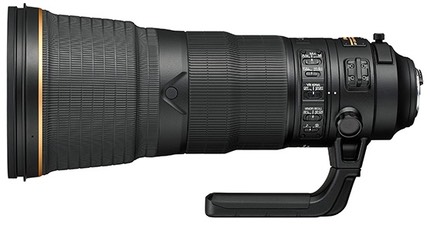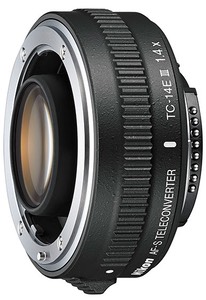(news & commentary)

Long lens users got a bit of news from Nikon today. The 400mm f/2.8 is now an FL lens (fluorite lens elements) and received a weight reduction (almost two pounds [820g] lighter). Unfortunately, it also got a whopping price increase to US$12,000. The changes to the lens seem to come mostly from Nikon’s experience with the 800mm: more precise electronic aperture activation. Style and looks have changed, with the tripod collar moving from the front of the lens to the back, amongst other details. The lens is dust and moisture sealed. As with the old lens, Nikon’s hypothetical MTF charts look just like we want with an exotic: basically flat lines between 0.9 and 1. The lens focuses a little closer (by a foot, or .3m), but we also get yet another new drop-in filter size: 40.5mm.
Given the yen’s decline against the dollar recently, this lens has a whopping price increase implied of more than US$3000 here in the US. While I like many of the changes to the lens, at these prices Nikon is reaching too far, IMHO. The current 400mm, which I’ve been using for awhile now, is a superb lens, perhaps the best of the exotics (haven’t tried the 800mm, though). So things that make the lens better—better optics, lighter weight, more reliable aperture performance, closer focusing—just add to an already exceptional lens. At the new price, though, the primary buyer will be lens rental companies.

Meanwhile, the TC-14E has finally been revised to a newer TC-14EIII version (US$600). Besides a new optical formula (7 elements in 4 groups versus the old 5/5), the converter gets Flourine coatings to protect the front and rear surfaces from dirt, plus splash protection. Curiously, the new converter has only 8 connections to the camera, whereas the old one had 10. This would indicate to me that Nikon is moving away from its old style of passing lens information from lens to converter to camera (good news). The bad news is that the old AF-I lenses and many of the older AF-S exotics can’t be used with the TC-14EIII (use the TC-14EII instead).
Personally, I’ve slowly become a TC-phobe. There are multiple reasons for this. The added lens mount adds additional tolerances into the system that are sometimes difficult to tune out; any additional optics slightly degrade the optics in front of them; Nikon telephoto lenses tend to perform poorly at long distances, and most times you’re using a TC to shoot at distance; pixel counts have gotten high enough that 1.2x and 1.3x crops in camera still give you enough to work with.
I’m also scratching my head yet again trying to understand what Nikon really thinks is needed in their lens lineup. This TC was needed years ago. The constant refresh of the exotics is okay—I’m glad to see Nikon actually be somewhat regular about something—but these very low volume lenses get an awful lot of attention compared to lenses that people really want updated (300mm f/4, where art thou?).
It’s clear to me that someone somewhere at Nikon has a “strategy” for lenses. It’s unclear to me what that strategy is achieving or that it even attempts to create a broad, deep line of lenses with no significant gaps or liabilities. Nikon just reduced their lens sales forecasts to well below the market rate of change. Nothing they’ve announced in the last year (400mm f/2.8, 18-300mm DX, new 18-55mm DX, 50mm f/1.4 for Df, 58mm f/1.4, and the 18-140mm DX) is going to change that. That’s 5 replacements for existing lenses, one new lens, if you’re counting. So someone at Nikon thinks there are no holes in their lens lineup. They are wrong.
Support this site by purchasing from this vendor:





